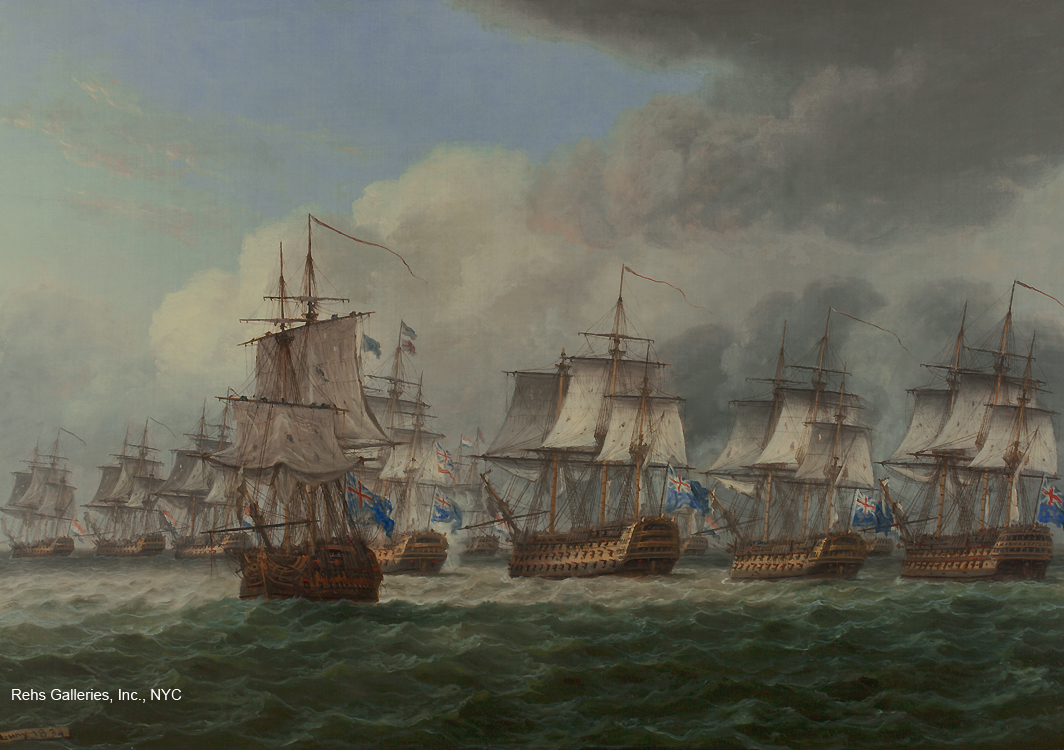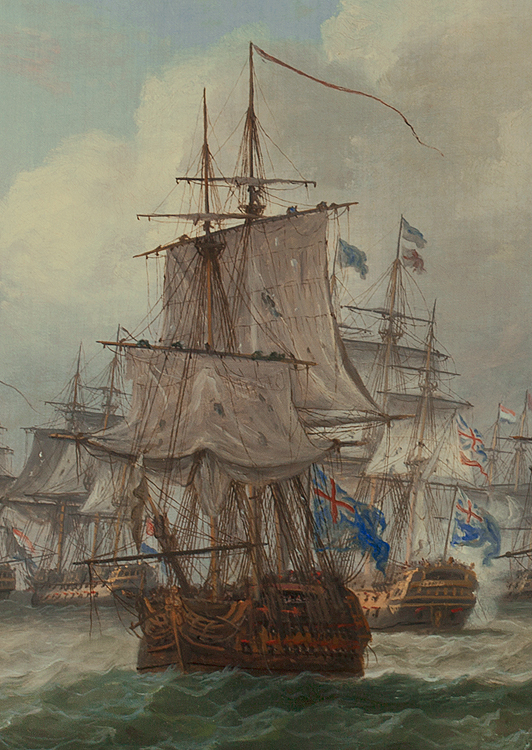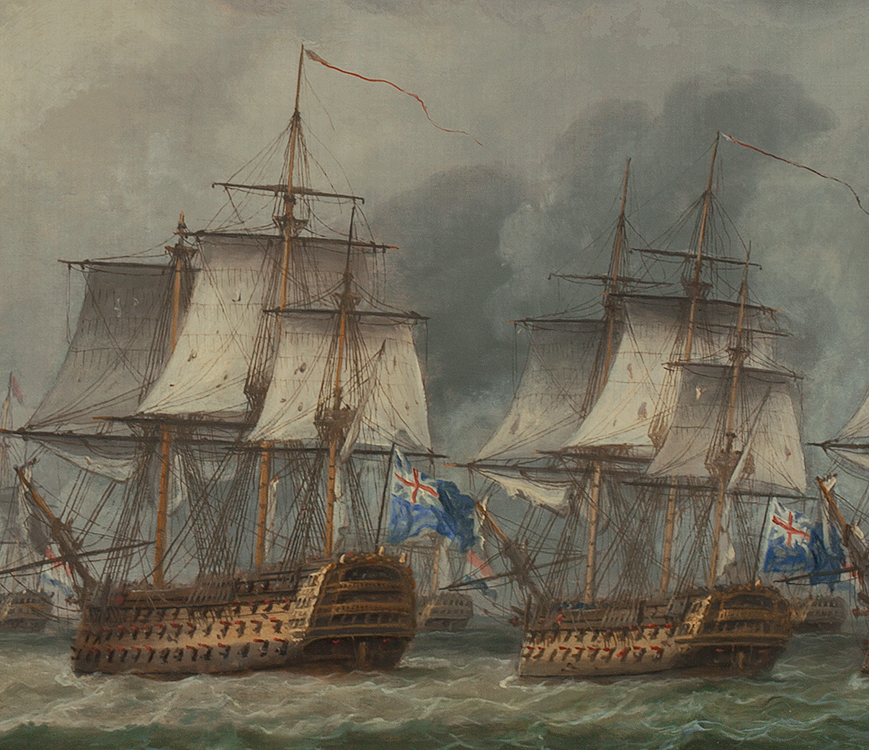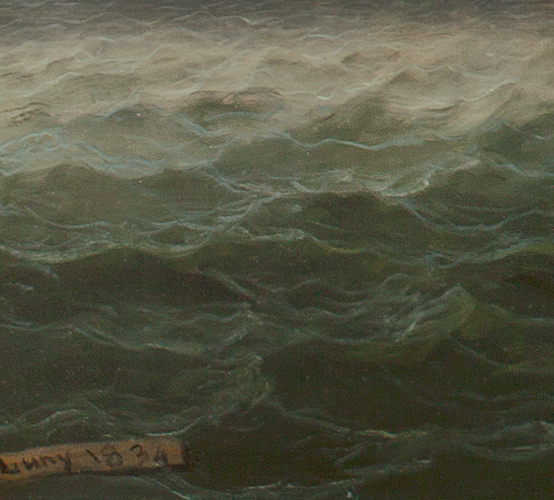Thomas Luny
(1759 - 1837)
The Battle of Doggerbank
Oil on canvas
23 3/4 x 34 inches
Signed and dated 1834
BIOGRAPHY - Thomas Luny (1759 - 1837)
Thomas Luny was born in London in 1759 and received his formal training under the watchful eyes of Francis Holman. Luny’s first exhibited work was in 1777 at the Society of Artists and his address was given as “at Mr. Holman’s, Johnson St., St. Georges” and it appears that he continued to work with Holman until the early 1780’s. His style of painting is very close to that of his master, this similarity may indicate that Luny assisted Holman on a number of works that were produced during this period.
Luny was living on his own by 1780 as his address was given in the Royal Academy exhibition of that year as Anchor and Hope Street, St. George’s, Middlesex; this was also the year he exhibited his first work there. However, the fact that he was still living near Holman leads one to believe that they were still in close contact. In 1780, Holman exhibited his The Engagement between Sir G.B. Rodney and the Spanish Squadron at the Royal Academy – a work that Luny would have been very familiar with. Only 2 years later, 1782, Luny produced his own version of this scene and chose to exhibit it at the Royal Academy.
By 1782 Luny had moved to 42, Ratcliff Highway and was now truly on his own and over the next 10 years exhibited approximately 22 works at the Royal Academy. All of the works shown were maritime subjects and included such scenes as: View of the Thames, with the yacht and boats of a private family (RA 1782); Lord Rodney, in the Formidable, at 14 minutes past 9 a.m., leading the center division of the British fleet through the French line, April 12, 1782 (RA 1783); Dock Yard (RA 1785); Whitby from the Sea (RA 1787); Ships Sailing out of the Downs (RA1787); View in the Channel (RA 1791) and A View of Swan Cliff and Dunnose, with an Indiaman Sailing in a Wind (RA 1793).
In 1793, at the beginning of the French Revolutionary Wars, it is said that he joined the Royal Navy as a purser and served under Captain George Tobin, R.N. This assumption is supported by the fact that he ceased exhibiting his works that same year. It is generally believed that Luny retired from the Navy in 1810 due to rheumatoid arthritis and settled in Teignmouth around the same time. He also maintained a studio London - evidenced by the fact that the Royal Academy exhibition book of 1837 gives two addresses for him; one in Teignmouth and one in London.
Like many artists of the period, Luny kept an account book in which listed the title, price and purchaser for each work. It is interesting to note that in 1807 there are a couple of entries of views in Teignmouth; so he may in fact have retired from the Navy a little earlier than previously thought. His illness, which was quite serious, had not only confined him to a wheelchair, but also caused him to lose the use of his hands. In order to paint, he had to either hold the brush between his wrists or have them strapped to on.
Even with this serious disability his production was impressive. Between 1807 and his death in 1837 his account book lists some 2,200 works; adding in the works painted before 1807, he must have produced more than 3,000 paintings in his lifetime. In 1837 he exhibited 3 works at the Royal Academy: Crookhaven, Ireland; the Vixen Sloop of War Warping out of Harbour; View on the Coast of Devon – Clouds Dispersing; and Cawsand Bay, Plymouth – Morning Mist.




